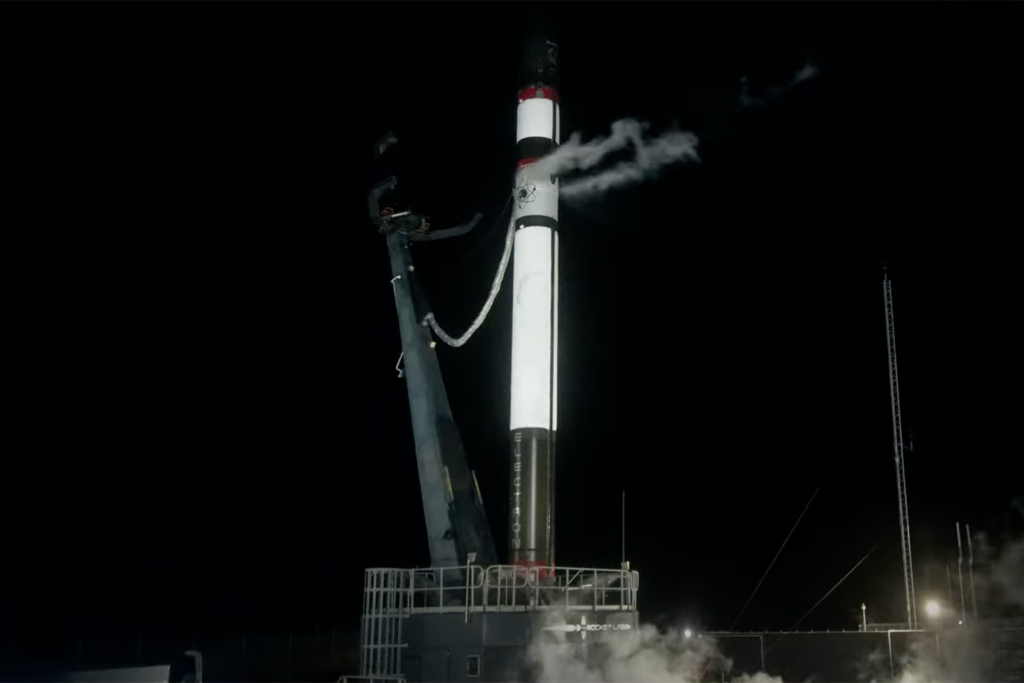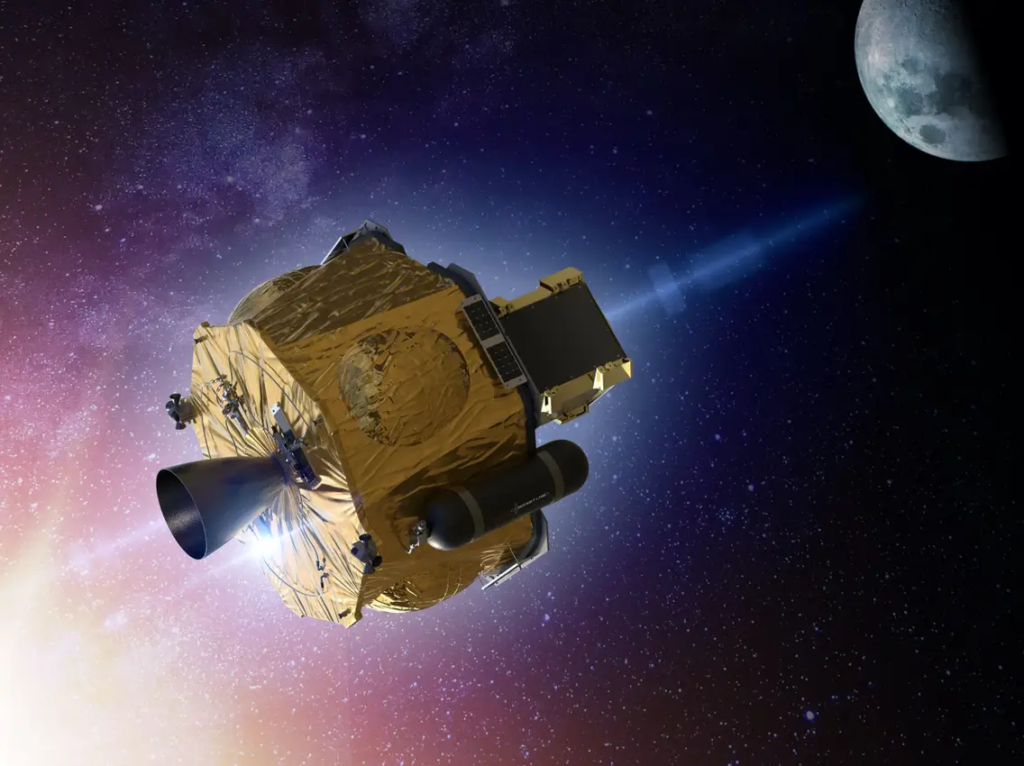
Rocket Lab’s Mission To Mars Is Getting Closer
Rocket Lab has been making impressive progress in a bunch of different areas. Even while Neutron development and manufacturing have begun ramping up in Virginia, multiple launch vehicles are waiting at Launch Complex 2 for the first launch from the United States. This comes in addition to some ambitious upcoming missions including one to Mars.
Back in 2021 Rocket Lab was awarded a subcontract by the University of California Berkeley Space Sciences Laboratory (UCBSSL) to design two Photon spacecraft for a scientific mission to Mars. Unlike previous missions, these photon spacecraft are specially designed for the distance, duration, and expectations of ESCAPADE. If successful, this spacecraft and Rocket Lab will be vital in helping understand the structure, composition, variability, and dynamics of Mars’ unique hybrid magnetosphere.
In the last few months, Rocket Lab has been continuing to work on the project which is scheduled for 2024. Being that we are only days away from 2023, this launch is just around the corner. This mission is another example of what Photon is capable of and its importance to the company. Here I will go more in-depth into the mission itself, Photon’s mission specific design, what to expect in the future, and more.
Mars Mission

Despite Rocket Lab’s full schedule and successful results for 2022, the company is ramping up for the next year and trying to improve. For example, just two days ago they tweeted saying, “The next Electron is in the queue at LC-2! We’re gearing up for a busy start to the year with back-to-back launches from @NASA_Wallops.” This same theme can be seen with Photon and the mission to Mars. Back in July of this year, Rocket Lab tweeted mentioning, “Photon set #CAPSTONE on a path to the Moon. Now it’s bringing Mars within reach too. Right now we’re developing two Photon spacecraft for the@NASA-funded @UCBerkeley ESCAPADE mission to study the red planet’s atmosphere and past.”
The Escape and Plasma Acceleration and Dynamics Explorers (ESCAPADE) mission, led by Rob Lillis at UCBSSL, is a twin-spacecraft science mission that will orbit two spacecraft around Mars. This contract was originally awarded in June of 2021. In terms of a mission profile, following an 11-month interplanetary cruise, the two Photons (named Blue and Gold) will insert themselves into elliptical orbits around Mars and conduct a 1-year primary science mission. ESCAPADE’s Photons will use the flight-proven Curie propulsion system to perform Mars orbit insertion and will be equipped with other subsystems that enable planetary science, including star trackers and reaction wheels for precision pointing from Rocket Lab’s Sinclair Interplanetary team, as well as ranging transceivers for deep space navigation.
ESCAPADE is the latest of only three missions proceeding under the current round of NASA’s Small Innovative Missions for Planetary Exploration (SIMPLEX) program to conduct compelling planetary space science with small satellites and provide more opportunities for flight experience to the science community. The mission specifically, is the latest SIMPLEX mission to pass Key Decision Point-C (KDP-C), confirming it for implementation in preparation for launch to Mars in 2024.
To better put the significance of this mission in perspective, now long ago Rocket Lab CEO Peter Beck commented, “This is a hugely promising mission that will deliver big science in a small package. Planetary science missions have traditionally cost hundreds of millions of dollars and taken up to a decade to come to fruition. Our Photon spacecraft for ESCAPADE will demonstrate a more cost-effective approach to planetary exploration that will increase the science community’s access to our solar system for the better.”
Focusing back on other important mission details, the two identical interplanetary Photon spacecraft are about the size of a mini-fridge and weigh no more than about 250 pounds (120 kilograms) excluding fuel. While we know the spacecraft bus helping with the mission, the launch vehicle is still unknown. Rocket Lab and the Electron launch vehicle are not capable of getting these payloads to Mars, so the company and NASA were looking for rideshare opportunities to save costs. The mission was originally going to launch with Janus and Psyche, but will not be able to. “For ESCAPADE, we’re evaluating a number of rideshare options to enable this critically important science while also lowering costs,” said Alan Zide, program executive for the mission at NASA HQ. An important aspect of this mission that we will likely hear more about in the near future.
Photon’s Importance

Now that we know more about some of the mission details and timeline, we can take a closer look at the impressive opportunities that Photon provides and why this mission is so important. At its core, Photon is an integrated launch and satellite solution. The Photon small spacecraft is based on the heritage Electron launch vehicle Kick Stage, leveraging numerous components that have significant flight heritage, including the Curie engine, an in-house designed and developed in-space propulsion system. Within the Electron launch vehicle, it acts as a third stage. Photon flies as the upper stage of Electron, eliminating the parasitic mass of deployed spacecraft and enabling full utilization of the fairing. It can also fly on other launch vehicles, in particular using ESPA ports as a secondary payload, which we will see not long from now.
One of the most impressive demonstrations of this spacecraft came with the successful completion of the CAPSTONE mission. On June 28, 2022, Rocket Lab launched the Cislunar Autonomous Positioning System Technology Operations and Navigation Experiment (CAPSTONE) spacecraft for NASA and Advanced Space. On July 04, 2022, Rocket Lab’s Lunar Photon spacecraft completed a trans lunar injection and successfully deployed CAPSTONE on its mission to the Moon. Designed and built by Tyvak Nano-Satellite Systems, a Terran Orbital Corporation, and owned and operated by Advanced Space on behalf of NASA, CAPSTONE will be the first spacecraft to test the Near Rectilinear Halo Orbit (NRHO) around the Moon. This is the same orbit intended for NASA’s Gateway, a multipurpose Moon-orbiting station that will provide essential support for long-term astronaut lunar missions as part of the Artemis program.
Looking at the Photon spacecraft that was used for the CAPSTONE mission and comparing it to ESCAPADE highlights its versatility. The CAPSTONE Photon featured much smaller solar panels attached to the body and the primary CAPSTONE Payload in the center. For the Mars mission, not only are there two of them, but they feature two large solar panels on either side, and additional equipment for commutation and operations at the red planet.
For years now, work has been completed with the goal of launching these spacecraft on time. Back on August 17th, 2021, the project passed an important mission review, moving the mission into its next phase with a new target launch readiness date of October 2024. The review, Key Decision Point C, evaluated the mission’s preliminary design and project plan to achieve launch by its target launch readiness date. With the successful review, ESCAPADE moved into phase C, which included the final design of the mission and building of the instruments. “We are thrilled to pass this critical milestone, the culmination of two years of science and engineering work from a talented and dedicated team at UC Berkeley and our partners,” said Rob Lillis, space physicist at UC Berkeley and principal investigator for ESCAPADE. “We’re very excited to now move towards final designs, assembly, test, launch and get on our way to Mars.”
Using instruments to measure magnetic fields, ions, and electrons, the ESCAPADE spacecraft will analyze how Mars’ magnetic field guides particle flows around the planet; how energy and momentum are transported from the solar wind through Mars’ magnetosphere; and what processes control the flow of energy and matter into and out of the atmosphere. “Our heliophysics decadal surveys” – the community-wide survey used to set NASA’s scientific objectives – “have identified the scientific need to study the space environments of other planets,” said Jared Leisner, ESCAPADE program scientist at NASA HQ. “By studying the same processes at different planets, we gain key insights into how they function both at Earth and at other planets beyond the solar system.”
As a configurable platform, Photon can be tailored to meet unique mission requirements. From mass manufacture as a streamlined constellation offering, to a single customized technology demonstration spacecraft, Photon can somewhat easily be adapted to make different missions possible. A great example is the upcoming mission to Venus. While Rocket Lab started by going to the Moon, they now are in the process of developing two separate mission Photons for Mars and Venus. Something that will help prove the importance and capability of this system.
Conclusion
Rocket Lab is continuing to work on a bunch of different exciting projects including Neutron, Launch Complex 2, Photon, and much more. Right now, work is being completed on the two Photon Spacecraft expected to head to Mars in 2024. We will have to wait and see how it progresses and the impact it has on the space industry.